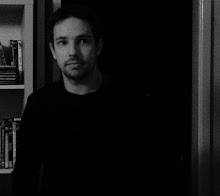Jim Jupp co-founded the Ghost Box label with Julian House in 2003, and has released music as Belbury Poly and Eric Zann. He very kindly took the time to answer a few of my questions. 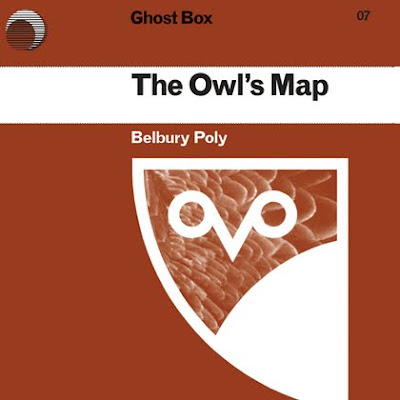 Ghost Box seem to be interested in both the sinister (Lovecraft, The Stone Tape) and the benevolently paternalistic/institutional (Penguin paperbacks, public information films), and especially in the overlap between the two. Do you have a specific connection between them in mind? Or is that for listeners to decide for themselves?
Ghost Box seem to be interested in both the sinister (Lovecraft, The Stone Tape) and the benevolently paternalistic/institutional (Penguin paperbacks, public information films), and especially in the overlap between the two. Do you have a specific connection between them in mind? Or is that for listeners to decide for themselves?The intersection of those two worlds is very much what Ghost Box is about and it's something that Julian and I stumbled on really in trying to package our music and show how it referred back to our own interests and obsessions. It's a mystery to us why it works but there just seems to us, to be some kind of logic to a world where weird cosmic and occult fictions play out against a background of post war modernism and paternalistic institutions. Maybe something to do with the otherness of things recalled from childhood and the way that images, sound, Tv pictures take on a fantastic aspect through the medium of memory- so a perfectly mundane illustrated book or public information film from the dimly perceived past takes on the magical qualities of a dream.
 Many artists have appeared in recent years with similar influences to yourselves, including some (Broadcast, Moon Wiring Club) who have ended up collaborating with Ghost Box. Do you think this is more than coincidence?
Many artists have appeared in recent years with similar influences to yourselves, including some (Broadcast, Moon Wiring Club) who have ended up collaborating with Ghost Box. Do you think this is more than coincidence?
I think this is partly coincidental but in music and any other forms of culture it always happens that some themes seem to swing into the spotlight simultaneously for different artists. In the case of Broadcast I'd say that they were in this territory long before any of us and were a major influence. We were in touch with Moon Wiring Club from back in our first year of operation and I think that this was a case of parallel evolution: the emergence of another label with a strong senses of visual identity and narrative set in a hazily defined parallel world. I think now though partly because there was a scene identified as "hauntology" there are now acts emerging who hang everything on images from old Dennis Wheatley novels and Hammer films, but that was only ever a small part of the influences at work on the Ghost Box artists. Inevitably any genre terms becomes a stick to beat you with and I see hauntology used to describe wildly differing kinds of music, to be honest I don't really understand what it means - it was very nice and very flattering to be part of a new genre definition but at Ghost Box we're trying to shuffle politely sideways off the hauntology stage without anyone noticing.
 If Ghost Box imitators started springing up in the same way as Boards Of Canada clones did a few years ago, would you feel the need to change your approach in any way? Or are you happy for the Ghost Box world to be expanded by others in the same way as Lovecraft's was?
If Ghost Box imitators started springing up in the same way as Boards Of Canada clones did a few years ago, would you feel the need to change your approach in any way? Or are you happy for the Ghost Box world to be expanded by others in the same way as Lovecraft's was?
Well I think I partly answered this in the previous question. I'm not sure that we have that many imitators musically, but I do see the influence of Julian's artwork cropping up (sometimes blatantly) all over the place in the work of new artists and sometimes work from established artists at bigger labels. That's not a problem for Julian I don't think its very nice to know we've been a very subtle (almost invisible maybe) influence for some artists.
On the subject of BOC I'd have to acknowledge their huge influence on what we do, our musical approaches may have been different but that goal of the past reinterpreted as a magical or dreamlike world is something for which we are entirely indebted to them. I find their records still thoroughly fresh and exciting even now, I don't think I'll ever get tired of them. Its odd because that period of British electronica from the mid nineties to the early 21st century was extremely prolific and exciting and yet with hindsight a lot of the records seemed to be so damned zeitgeisty that they had a really short sell by date past which they no longer sounded exciting. I imagine that period will enjoy a huge revival in about five years and maybe all those sounds will be re-enchanted.
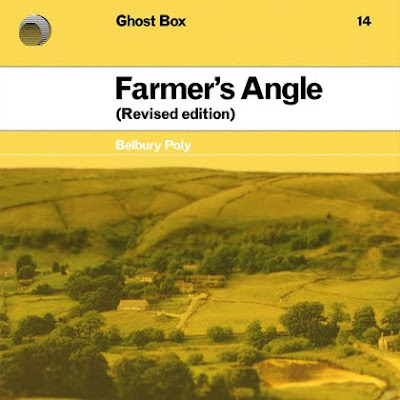 Julian has said that he's interested in the "clunky" design of library LP covers and British modernism, and you've made similar comments about the music of Denton and Cooke ("A slightly quirky, slightly wrong Britishness, even thought there's clearly a disco sound"). What is it about that kind of awkwardness that appeals?
Julian has said that he's interested in the "clunky" design of library LP covers and British modernism, and you've made similar comments about the music of Denton and Cooke ("A slightly quirky, slightly wrong Britishness, even thought there's clearly a disco sound"). What is it about that kind of awkwardness that appeals?
I think what we're getting at here is a unique Britishness in design and music - the terms clunky and awkward are maybe a little unfair - I guess it has to do with the British love of the amateurish and homespun. We are a culture of DIY enthusiasts, gardeners, garden shed inventors and hobbyists and the results are often beautiful through the very fact of not being slickly produced.
The clunkyness of the kind of design Julian talks about here though is not just a British thing- its a product of its time, and age where design and vision were modernist, and often with an eye to the future but the means of production were still scissors glue and a little bit of craftsmanship.
 Ghost Box has been endlessly theorised by music journalists. Was this unexpected?
Ghost Box has been endlessly theorised by music journalists. Was this unexpected?
It was completely unexpected, for a year or so music forums and blogs gave us loads of coverage and there was endless (sometimes very heated) debate about what we were doing and what it meant. Its a very strange feeling having your motivations dissected like this, kind of annoying and flattering in equal measure. I think the debate carries on but now its just about hauntology and hopefully and we're not really such a hot topic. I've still no idea what hauntology is though and couldn't give a hoot about Derrida or Baudrillard.
 Would it be fair to say that Ghost Box are systematically exploring aspects of the past that are largely missing from our present culture?
Would it be fair to say that Ghost Box are systematically exploring aspects of the past that are largely missing from our present culture?
I think that's fair but its also to do with reassembling elements of the past to create a kind of parallel world where all this stuff happens all at once, if that makes sense?
It wasn't really deliberate but looking back when we started Ghost Box 7 years ago it was just at the time that everything was starting to get uploaded, it was just pre-You Tube and Flickr so the stuff we were referencing was still rare and largely forgotten. It's all very exciting and wonderful that you can now see any old ladybird book or public information film within a few seconds - but I think in a way that increases the poignancy of it all , because those old things for us were about the mystery of half remembered TV or the thrill of finding a mysterious old record in a charity shop. Now it looks like that magic and those thrills will be gone for ever as the entirety of human culture is uploaded. So maybe now rather than being purely about nostalgia we are partly about nostalgia for nostalgia.
 Do you think it will be important in coming years to develop new ways of combining audio and visuals, or are the current formats satisfactory? Is vinyl preferable to digital?
Do you think it will be important in coming years to develop new ways of combining audio and visuals, or are the current formats satisfactory? Is vinyl preferable to digital?
There is more pressure for artists to produce their own video content now and it's daunting because I don't believe anyone could ever do justice to both music and visuals - unless they're producing very rapidly sample based, drone or noise music and cut and paste video art. I'm not saying there's anything wrong with this, its partly what we do, but of course with all of these tools instantly available to everyone the lack of quality control is a problem, and there now seems to me to a be a virtue only in ideas and concepts in a lot of highly acclaimed new music (especially electronics) I think a lot of artists are just throwing a colossal amount of shit at the digital wall in the hope that some of it sticks, which inevitably it does. I hope though people will still learn about filmaking or music production or composition. I for one can't keep up, I find social media stressful enough, and I don't really ever get time to respond to messages and mails. It worries me to see people unable to get through a conversation of a meal without fannying around with a smartphone. I don't mean to sound like a grumpy old man but I think its the duty of anyone who grew up in the pre digital age to be on their guard against the alarming rate at which technology enslaves us. I strongly believe it really really does and I think we all know it deep down. This is nothing to do with your question though, sorry!
Vinyl is certainly popular with our audience and it looks more and more like it will now be around for longer than the CD. All sorts of main stream releases now get vinyl versions and I know from our manufacturers that demand is going up and up.
Download music is great and its nice to be able to grab stuff quickly and cheaply on demand, but popular music divorced from its physical and visual context is somehow a pale shadow of a download. Especially I think for electronic and instrumental music or pretentious high concept rubbish like ours. The fidelity arguments about CD versus vinyl are well worn and I think it depends on the kind of music you're listening to. I think classical and acoustic music are far far better on CD and electric and electronic music are much nicer with all the warmth and artifacts of vinyl. Most of all its nice to be able to put music on without having to jab about on a glowing screen like a lab monkey trying to get peanuts.
 "The owl that calls upon the night speaks the unbeliever's fright" for William Blake's The Auguries of Innocence, 1959
"The owl that calls upon the night speaks the unbeliever's fright" for William Blake's The Auguries of Innocence, 1959 From Horned Beetles & Other Insects, 1958
From Horned Beetles & Other Insects, 1958

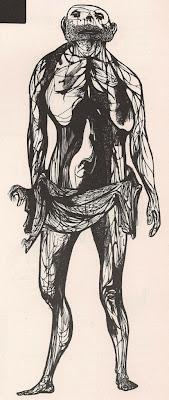


























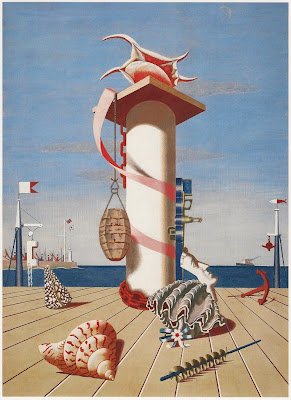
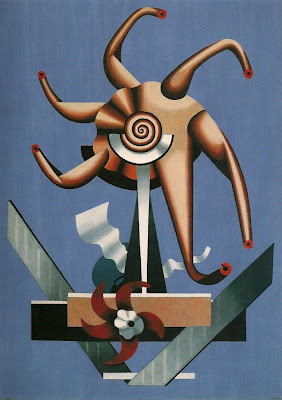
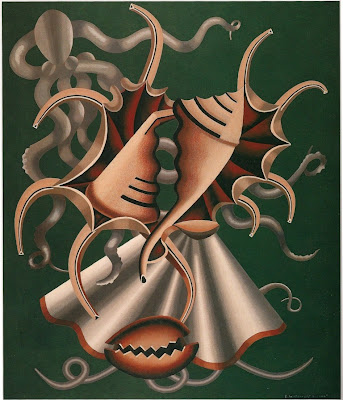












































.jpg)


















